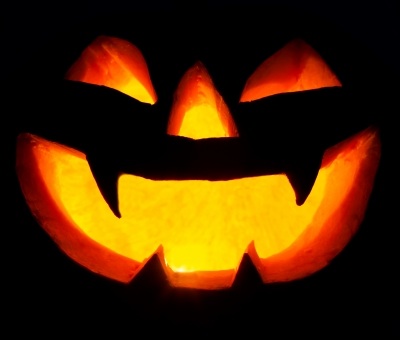Every autumn, children and adults celebrate the popular holiday Halloween. People of all ages can take part in pumpkin carving, apple bobbing, spooky corn mazes and even trick-or-treating. Whatever activity it may be, there is one tradition that Halloween is infamous for—dressing up in costume, particularly as ghosts, witches, goblins and zombies. But how did these traditions come about? Why does it have to be so scary? Is Halloween really a wicked and evil holiday? Here are some Halloween tales about Halloween itself…
Name of Holiday:
Two thousand years ago, the Celtic people celebrated their New Year on November 1, or All Hallows’ Day. This marked the end of summer and welcomed the beginning of dark and cold days to come. It was believed that ghosts and other dead spirits returned to the mortal world on the night of October 31, known as Hallows’ Eve, or what we call today “Halloween.”
Wearing costumes:
In exchange for dead spirits leaving people alone, the Celts hosted a festival called Samhain. At this festival, people built sacred bonfires and sacrificed animals in order to bribe the dead not to curse or haunt them. For more protection, people wore costumes such as the heads and skins of animals in order to appear more menacing. Today, the costume roles are reversed where children dress up as creatures of the dead to represent the spirits, and adults hand out treats so that the “spirits” will not stay to haunt them.
Trick-or-treat:
After the Roman Empire conquered the Celts in 1000 A.D., the Catholic Church claimed Halloween was evil because it welcomed the dead, so they declared November 2 as All Souls’ Day, a day to honor the dead. On this day, people went to church to pray for the dead but poor folks went door to door to say prayers for a family’s dead loved one in exchange for food. (Did you know: In 1930, the Madison Square Boys Club in New York City carried a banner on Halloween that read “American Boys Don’t Beg” in protest of trick-or-treating.)
Apple bobbing:
Since All Hallows’ Day celebrated the passing of the dead, the Romans decided to celebrate new life on All Souls’ Day by honoring the goddess Pomona whose symbol was a luscious apple. (Did you know: It was superstition that the first person to successfully bob an apple would be the next one to get married.)
Jack-o-lanterns:
The Irish started this carving tradition with and turnips, originating from the tale of “Stingy Jack,” a man who created a lantern using coal and a carved-out turnip. It wasn’t until the Irish arrived in America that they discovered pumpkins made the perfect jack-o-lanterns.
Halloween is now celebrated all around the world. In China, people visit the deceased on this day to pay respects and give gifts to them. In Italy, All Souls’ Day is still celebrated and big meals are cooked. In parts of Africa, imitation pumpkins are used because their pumpkin-harvesting season is not near Halloween. No matter how you celebrate the holiday, remember how it all started and have a Happy Halloween!





















































